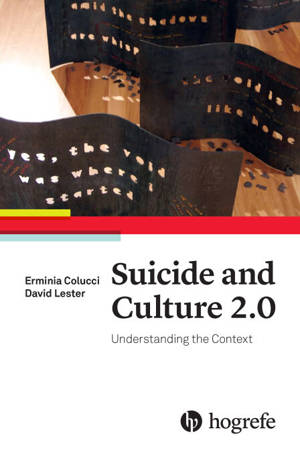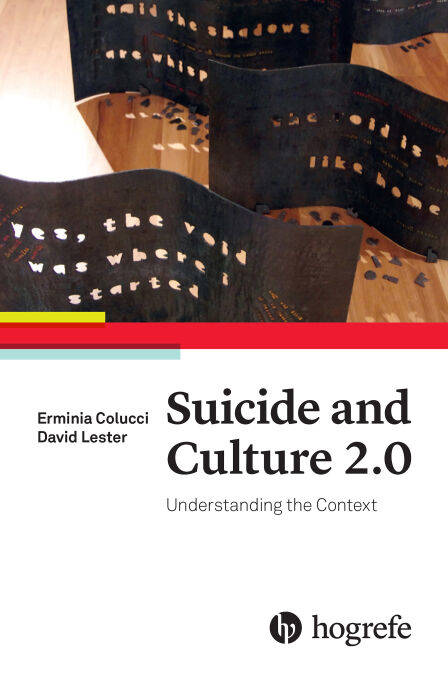
Je cadeautjes zeker op tijd in huis hebben voor de feestdagen? Kom langs in onze winkels en vind het perfecte geschenk!
- Afhalen na 1 uur in een winkel met voorraad
- Gratis thuislevering in België vanaf € 30
- Ruim aanbod met 7 miljoen producten
Je cadeautjes zeker op tijd in huis hebben voor de feestdagen? Kom langs in onze winkels en vind het perfecte geschenk!
- Afhalen na 1 uur in een winkel met voorraad
- Gratis thuislevering in België vanaf € 30
- Ruim aanbod met 7 miljoen producten
Zoeken
Omschrijving
###BOLD#TEXT[Integrating the role of culture is critical in preventing suicide]###
Written by leading suicide researchers
Explores suicide in different cultural contexts
Highlights how to conduct culturally sensitive studies
Building on the seminal work of Colucci and Lester (2013), this volume examines the unique perspective of the role culture plays in suicide research and prevention. With the current domination of individual and largely biomedical approaches in the field, these leading social scientists and suicide researchers carefully show how important integrating sociocultural factors is in helping to prevent people from dying by suicide and support those who live with suicidality.
The first section addresses the fundamental issues of why "culture" is of vital importance in understanding and preventing suicidal behavior, what the "cultural meaning" of suicide is, and where current research and theory are taking us. It concludes with a thought-provoking perspective on suicide as a staged performance. The second section features a mixed-methods cross-cultural study on the meanings of suicide in Australian, Indian, and Italian cultures. Additional chapters explore a culturally specific form of suicide (i.e., sati in India), suicide among Roma and Irish Travellers, and a community-based suicide prevention strategy for different populations, including migrants and refugees and people from low-and-middle-income Asian countries. The authors conclude with insightful recommendations for conducting culturally sensitive and meaningful studies.
This volume is essential reading for anyone involved in suicide research and prevention and more broadly to those interested in the sociocultural and political contexts of mental health.
Written by leading suicide researchers
Explores suicide in different cultural contexts
Highlights how to conduct culturally sensitive studies
Building on the seminal work of Colucci and Lester (2013), this volume examines the unique perspective of the role culture plays in suicide research and prevention. With the current domination of individual and largely biomedical approaches in the field, these leading social scientists and suicide researchers carefully show how important integrating sociocultural factors is in helping to prevent people from dying by suicide and support those who live with suicidality.
The first section addresses the fundamental issues of why "culture" is of vital importance in understanding and preventing suicidal behavior, what the "cultural meaning" of suicide is, and where current research and theory are taking us. It concludes with a thought-provoking perspective on suicide as a staged performance. The second section features a mixed-methods cross-cultural study on the meanings of suicide in Australian, Indian, and Italian cultures. Additional chapters explore a culturally specific form of suicide (i.e., sati in India), suicide among Roma and Irish Travellers, and a community-based suicide prevention strategy for different populations, including migrants and refugees and people from low-and-middle-income Asian countries. The authors conclude with insightful recommendations for conducting culturally sensitive and meaningful studies.
This volume is essential reading for anyone involved in suicide research and prevention and more broadly to those interested in the sociocultural and political contexts of mental health.
Specificaties
Betrokkenen
- Auteur(s):
- Uitgeverij:
Inhoud
- Aantal bladzijden:
- 280
- Taal:
- Engels
Eigenschappen
- Productcode (EAN):
- 9781613346440
- Verschijningsdatum:
- 23/03/2025
- Uitvoering:
- E-book
- Beveiligd met:
- Digital watermarking
- Formaat:
- ePub

Alleen bij Standaard Boekhandel
+ 42 punten op je klantenkaart van Standaard Boekhandel
Beoordelingen
We publiceren alleen reviews die voldoen aan de voorwaarden voor reviews. Bekijk onze voorwaarden voor reviews.









